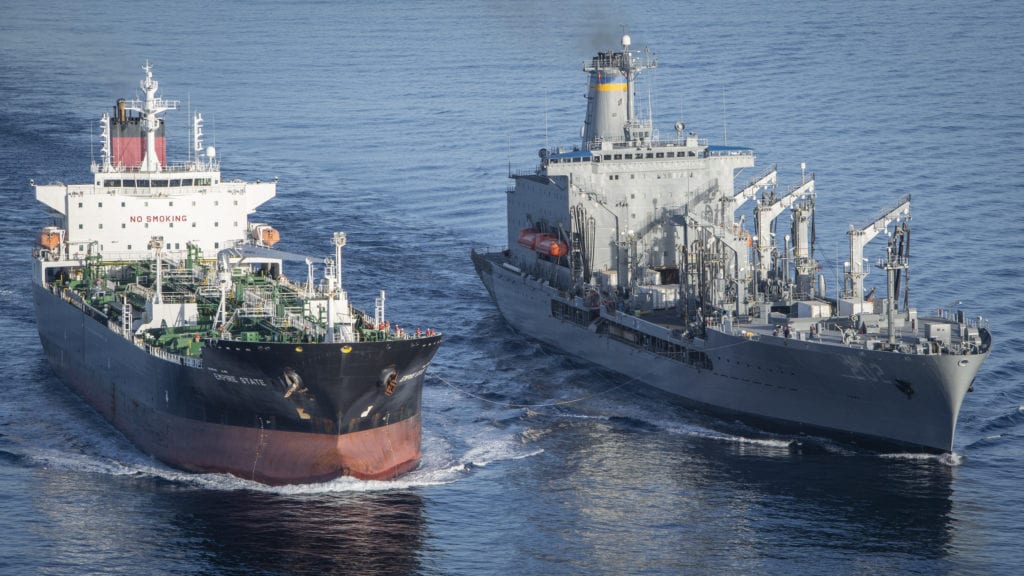
NATIONAL HARBOR, Md. — The nation’s sealift components are used to operating in peaceful seas and permissive environments but must prepare now for times when control of the seas is not assured, a panel of maritime leaders said.
Speaking Aug. 4 at the Navy League’s Sea-Air-Space expo at National Harbor, Maryland, were Douglas Harrington, deputy associate administrator for Federal Sealift at the Maritime Administration (MARAD); Christopher Thayer, director, Maritime Operations, Military Sealift Command (MSC); and Adam Peterson, of the government business development team at APL. The panel was moderated by Erica Plath, director, Strategic Mobility/Combat Logistics, Division, Office of the Chief of Naval Operations, U.S. Navy.
Thayer pointed out that sealift “capability today is far more than it was in 1990” when large numbers of sealift ships were activated for Operation Desert Storm. He said that sealift was again at an inflection point, with the Navy’ preparation for distributed maritime operations in contested environments.
He said that, during distributed operations, the nation’s maritime logistics forces may not always have escorts or overwatch and must “be prepared to operate and evade the enemy.”
Thayer also stressed the need for counter-UAS systems, anti-jam capabilities for GPS, the need for cybersecurity and the ability to operate under emissions control.
Communications is “a huge vulnerability,” Thayer said, noting that mobile communications capabilities are being deployed on some ships with tactical advisers.
Harrington also stressed the need for improved, more resilient communications capabilities for MARAD’s Ready Reserve Force (RRF). He noted the current reliance on satellite communications and the effect on morale that emissions control would have on the crews.
To adapt to providing logistics in a contested environment, Thayer said that MSC was working on concepts such as re-loading missiles in vertical launch cells while ships are underway, underway replenishment using unmanned aerial vehicles and refueling the combat logistics ships from commercial ships using modular CONSOL (consolidated cargo replenishment) adapter kits.
Harrington discussed the need for recapitalization of the RRF MARAD’s Ready Reserve Force and new, comprehensive strategy for equipping strategic sealift with new technology and regulations. He noted the increasing size and weight of defense cargoes. He advocated building increased resilience as well as cybersecurity.
He also said the government must “recall and re-focus on naval operations in a contested environment.”
Peterson pointed out the dramatic decline of the U.S.-flag merchant marine since 1960, now less than 0.5% of the 43,000 ships (displacing 1,000 or more gross weight tons) in international trade. He stressed that the government needs to develop more incentives to keep commercial vessels available in peacetime and war.
Harrington praised the “significant period of recapitalization,” which includes the construction of first of five National Security Multi-Mission Vessels, which will replace older ships and train mariners with modern technology now found on many merchant ships.
Asked about the Navy’s plans to operate autonomous unmanned ships in its fleet, Thayer noted that it is “hard to refuel an autonomous ship at sea.”
- BlueHalo to Test C-UAS System on Marine Corps JLTV - April 29, 2024
- USS George Washington Deploys to U.S. Southern Command, Eventually Headed to Japan - April 26, 2024
- SECNAV Advocates Increased Legal Immigration to Increase Shipbuilder Workforce - April 23, 2024



